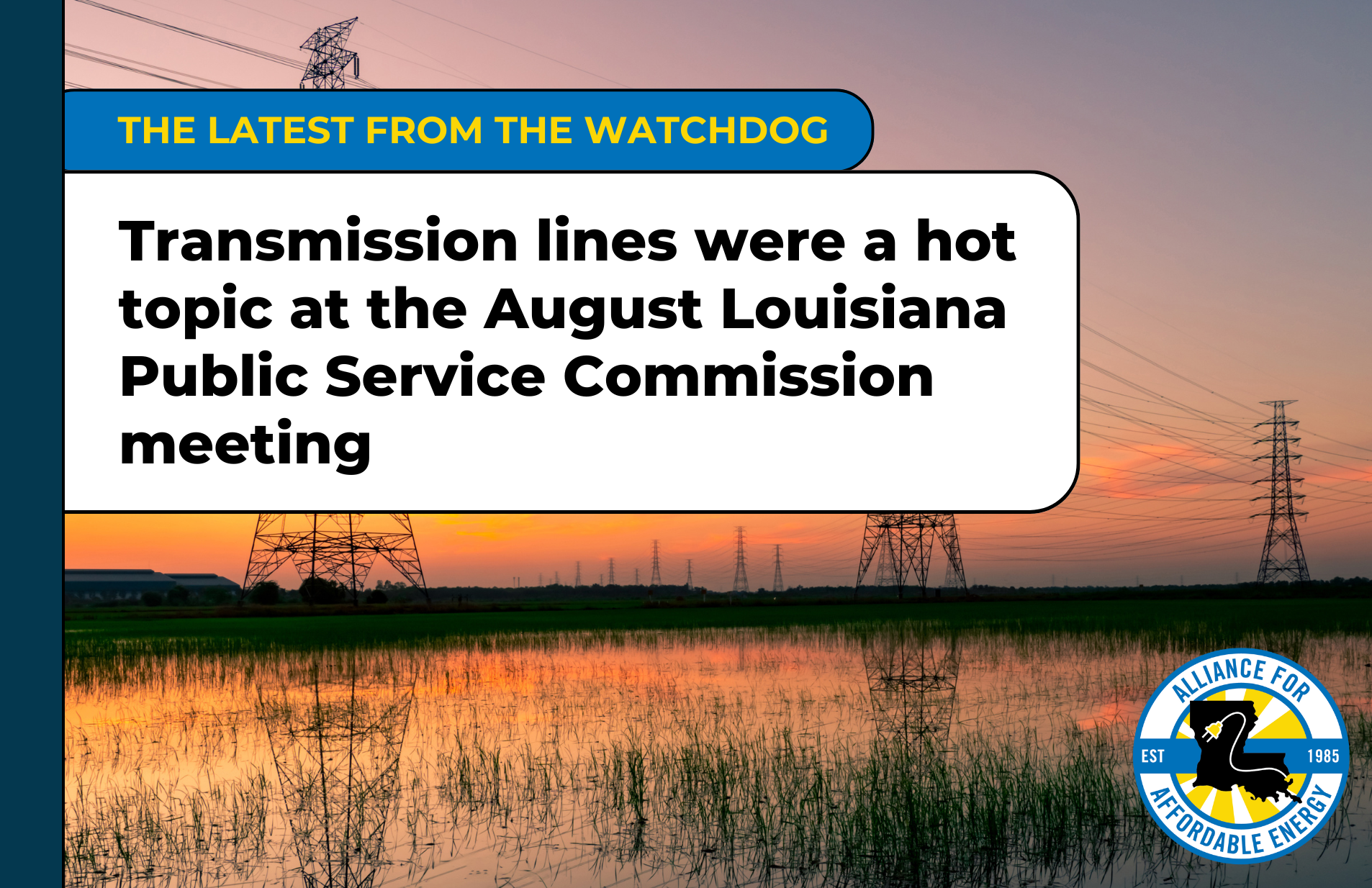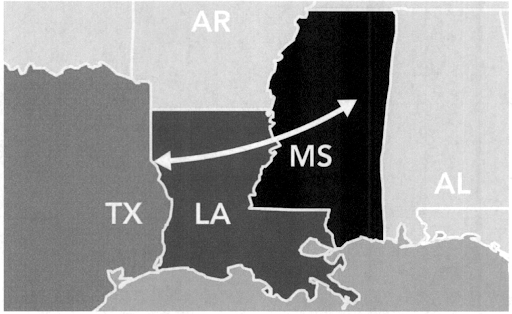
The LPSC discussed the Administrative Law Judge’s (ALJ) recommendations regarding the Certificate of Public Convenience and Necessity – a certificate the LPSC must grant to approve sitting for a transmission project. The recommendation found the project to be in the public interest and agreed that a transmission line like Southern Spirit would provide increased electrical capacity, reliability, and access to electricity sources available in MISO South (the regional grid that serves most of Louisiana) and for the Texas grid, with Southern Spirit owners bearing all the costs of the project.
The final motion included a caveat that Louisiana ratepayers will not bear any construction or siting costs associated with the transmission lines. Though this is a caveat intended to protect Louisiana ratepayers, the caveat was not necessary. The Southern Spirit transmission project is owned by a merchant transmission line developer, a kind of transmission owner whose projects are not directed by a Regional Transmission Operator or utility company. Merchant transmission line developers charge customers (Load Serving Entities) by using the lines to recoup their costs.
The LPSC’s decision is progress for the Southern Spirit project, but there is still a long road ahead before construction can begin. Southern Spirit Transmission owners must finalize routing details with the Louisiana landowners impacted by the project, await approval from the Mississippi Service Commission, and complete the MISO grid impact study process.
Related to the process by which the LPSC approves projects like the Southern Spirit Transmission, the LPSC approved revisions to the General Order Governing Transmission Certification and Siting.
 Source: Southern Spirit Transmission LLC testimony (02/14/2023)
Source: Southern Spirit Transmission LLC testimony (02/14/2023)These changes update the certification and siting approval process for transmission lines. The revision includes a definition of transmission projects that specifically includes transmission lines physically located in Louisiana that do not provide electric service to Louisiana consumers (ex, Southern Spirit transmission lines). The updated language also provides procedural rules for facilities designated as National Interest Electric Transmission Corridors, which did not exist when the PSC’s order was finalized in 2013. The new order enhances information sharing and other transmission certification requirements. Generally the updates are in line with other states’ Transmission Certification and Siting rules.